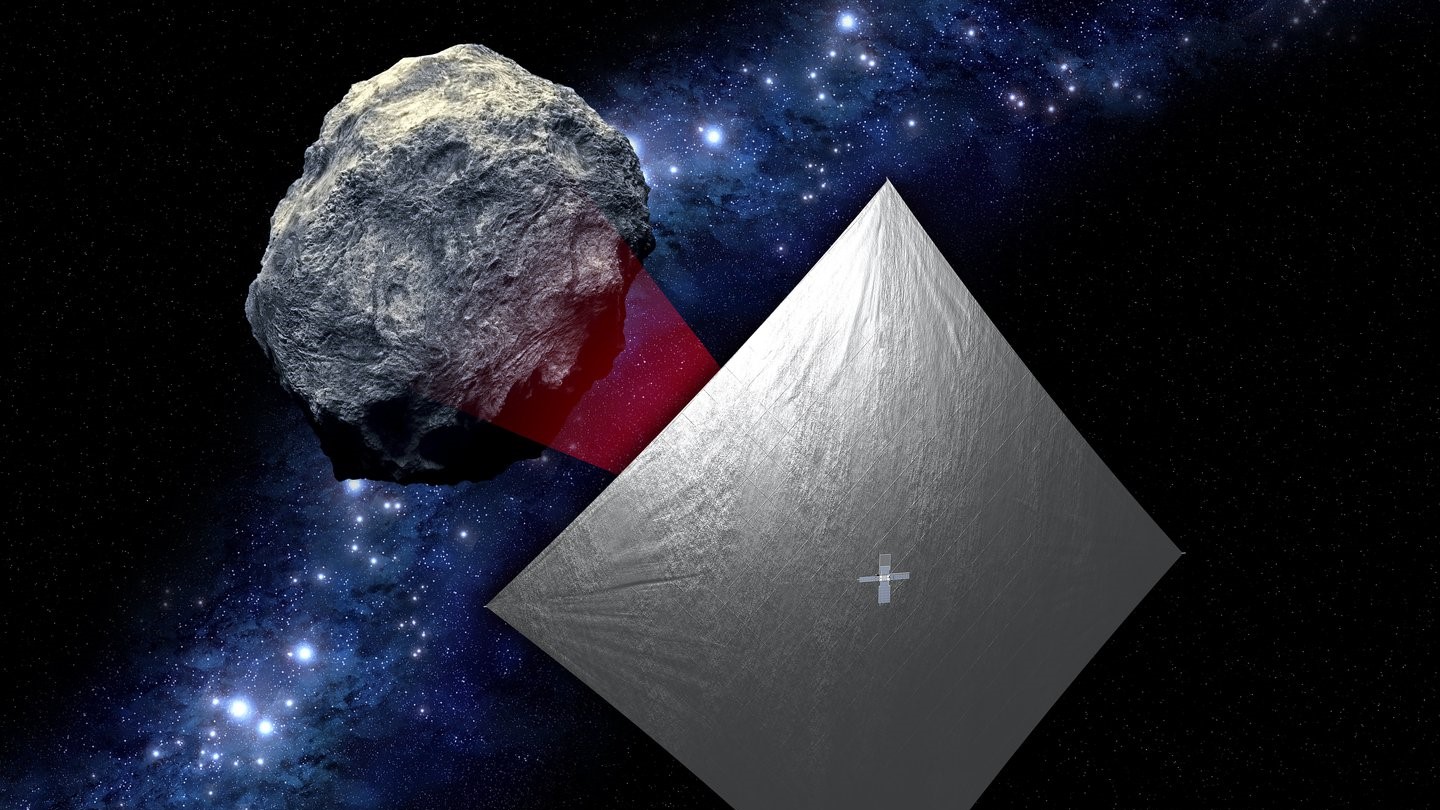NASA's Artemis 1 launched a solar sail cubesat to an asteroid. It may be in trouble.
NEA Scout has yet to phone home.

A tiny asteroid explorer that launched on NASA's moon mission last week still hasn't phoned home.
Near-Earth Asteroid (NEA) Scout was one of 10 cubesats that hitched a ride to space on NASA's Artemis 1 mission, which launched on Nov. 16. The spacecraft was designed to sail on sunlight to fly past a small asteroid dubbed 2020 GE about a year from now. But something seems to have gone wrong after the cubesat deployed.
"Following successful separation and deployment from NASA's Space Launch System (SLS) on Nov. 16, the Near-Earth Asteroid Scout (NEA Scout) project team has not yet established communications with the spacecraft," NASA officials wrote in an emailed statement. "Teams continue working to initiate contact with NEA Scout."
Related: Artemis 1 launch photos: Amazing views of NASA's moon rocket debut (gallery)
In particular, NEA Scout personnel are hoping that the spacecraft's unusual propulsion strategy could help them track down the cubesat. Packed into the small satellite was a reflective, silvery solar sail that unfolds to 924 square feet (86 square meters) — larger than a racquetball court, according to NASA.
Had everything gone smoothly, NEA Scout planned to deploy its sail in early December, according to a NASA spokesperson, then use the solar radiation hitting it to reach the asteroid. Instead, despite not having heard from the spacecraft, NASA personnel broadcast a command for "an emergency solar sail deployment" twice on Monday (Nov. 21) in hopes that the highly visible sail could help them find the cubesat.
"If the spacecraft is listening and successfully opened its sail, it could be seen from telescopes on Earth," NASA officials wrote. "Several ground-based observatories are attempting to look for NEA Scout and share data, which will be invaluable in helping determine the spacecraft's status."
Get the Space.com Newsletter
Breaking space news, the latest updates on rocket launches, skywatching events and more!
NEA Scout isn't the only cubesat from last week's Artemis 1 launch to struggle. For example, OMOTENASHI, a tiny Japanese lunar lander, missed its date with the moon and another NASA cubesat, LunaH-Map, missed a crucial engine fire as it flew past the moon on Monday. The agency added the cubesats to Artemis 1 knowing that the small missions carried higher risk than larger spacecraft with more redundancy and durability built into the design.
Other cubesats that launched last week seem to be doing better. An Italian cubesat called ArgoMoon is successfully sending home stunning photos of the moon and of Earth, and a second Japanese mission, called EQUULEUS, reported having safely made its first lunar flyby.
If NEA Scout recovers, it will be NASA's first solar sail to leave Earth's orbit; if it safely reaches asteroid 2020 GE, the spacecraft will likely make the slowest asteroid flyby to date, and the asteroid will become the smallest any spacecraft has visited, according to NASA.
Email Meghan Bartels at mbartels@space.com or follow her on Twitter @meghanbartels. Follow us on Twitter @Spacedotcom and on Facebook.
Join our Space Forums to keep talking space on the latest missions, night sky and more! And if you have a news tip, correction or comment, let us know at: community@space.com.

Meghan is a senior writer at Space.com and has more than five years' experience as a science journalist based in New York City. She joined Space.com in July 2018, with previous writing published in outlets including Newsweek and Audubon. Meghan earned an MA in science journalism from New York University and a BA in classics from Georgetown University, and in her free time she enjoys reading and visiting museums. Follow her on Twitter at @meghanbartels.
-
geoffrey.landis There were 10 cubesats on the mission, but the article only updates the status of five of them. Any updates on the rest?Reply









